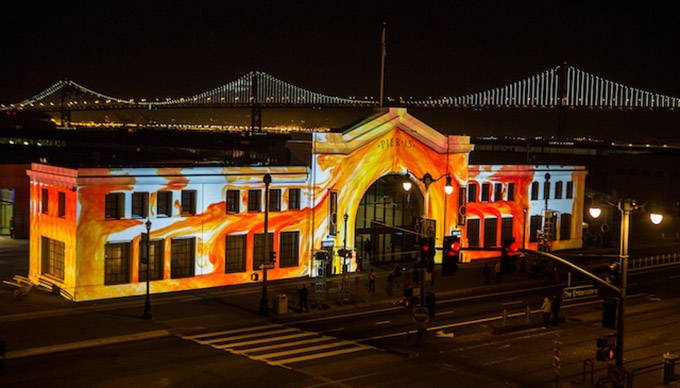Interactive Projection for Immersive Experiences
It’s exciting to be continually researching and working with the latest interactive technologies here at Ambient Interactive. Through this blog we’ll be sharing some of the emerging interactive digital technologies we work with, how they can be applied, and some examples of how they are being used for interactive digital exhibits and environments. In this post, we’ll look at interactive projection and its unique immersive qualities.
Interactive floor and wall projection experiences have become increasingly popular in museums, interpretive centres, and other institutional spaces around the world. These types of interactive digital exhibits are at the fore-front of creative technologies and are an effective addition to the mix of exhibits that keep these spaces relevant in a digital-age with tech-savvy visitors.
High-end projection systems, motion detection hardware, and interactive software are combined and customized to suite the experience and spatial environment. Visitors can use hand, leg, and body gestures to interact with projected imagery on floors, in front of walls, or other surfaces. Depending upon the experience that is produced, visitors can see things in a completely different perspective and are able to use their own gestures to interact and affect the imagery and audio in ways never before thought possible. It offers something quite different than traditional digital media that is experienced on stationary displays using touch screen input or other peripherals. Interactive projection has to be experienced to be fully appreciated.
The immersive interactive projection installation at the Wu Kingdom Helv Relics Museum is the world’s largest of its kind. It’s a truly inspirational example that uses a unique visual storytelling style with interactive floors and walls.
There are many applications for interactive projection such as educational and storytelling experiences, multi-player games, unique brand experiences, captivating ambient effects, and other memorable visitor experiences for museums and interpretive centres. It is commonly implemented just for its entertainment value for visitors of all ages including (and especially) children who find it endlessly fascinating. And since there is no limitation to the number of people who can interact with it at once, it’s great for large groups of visitors or events.
This projection covering the facade of the Exploratorium in San Francisco displayed a vivid biological imagery experience using the building as the canvas. The colourful projection was carefully mapped to the architectural features of the building.
 Image: The Creators Project
Image: The Creators Project
Whether it’s a projection for an area of floor in a museum, a wall in an interpretive centre, or the side of a culturally significant building, the possibilities are endless as to what environments can be utilized and interactive visuals can produced. With the latest edge-blending techniques we can combine numerous screens of high-definition imagery across multiple projectors, which is ideal for larger scale projects and immersive experiences. And by applying projection mapping techniques, we can manipulate imagery projected over surfaces that are not flat such as buildings, art installations, or other complex objects. We can also project onto both sides of glass and other clear surfaces by applying foils (clear film) to the surface, which makes the surface interactive for touch applications. These are just a few of the many different effects that can be generated using proven methods.
The potential of these unique interactive digital experiences is still only being realized. We look forward to working more with interactive projection and creating experiences that are innovative and leave lasting impressions with visitors.


